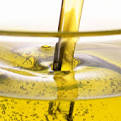













Cascarilla Bark - Croton eluteria
Family: Euphorbiaceae
Synonyms:Cascarilla, sweetwood bark, sweet bark, Bahama cascarilla, aromatic quinquina, false quinquina.
General Description:A large schrub or small tree up to 12 metres high, with ovate silver bronze leaves, pale yellowish brown bark and small white fragrant flowers. It bears fruits and flowers all year round.
Distribution:Native to the West Indies, probably the Bahama Islands, found growing wild in Mexico, Colombia and Ecuador,. The oil is mainly produced in the Bahamas and Cuba; some distillation takes place in America, France, and England from the imported bark.
Other Species:An essential oil is also distilled locally from other Croton species. White, red and black cascarillas are also found in commerce.
Herbal/Folk Tradition: The bark is used as an aromatic bitter and tonic for dyspepsia, diarrhoea, dysentery, fever, debility, nausea, flatulence, vomiting and chronic bronchitis.
The leaves are used as a digestive tea, and for flavouring tobacco. The bark also yields a good black dye.
Actions:Astringent, antimicrobial, antiseptic,carminative, digestive, expectorant, stomachic, tonic.
Extraction:Essential oil by steam distillation from the dried bark. (1.5-3 per cent yield).
Characteristics:A pale yellow, greenish or dark amber liquid with a spicy, aromatic, warm-wood odour. It blends well with nutmeg, pepper, pimento, sage, oakmoss, oriental and spicy bases.
Principal Constituents:Cymene, diterpene,limonene, caryophyllene, terpineol and eugenol, among others.
Safety Data: Non-irritant, non-sensitizing, relatively non-toxic (possibly) narcotic in large doses.)
Aromatherapy/Home Use:Respiratory system: Bronchitis, coughs
Digestive System: Dyspepsia, flatulence, nausea.
Immune system: Flu
Other Uses: Fragrance component in soaps,detergents, cosmetics and perfumes, especially men's fragrances. Flavour ingredient in most major food categories, soft drinks and alcoholic beverages, especially vermouth and bitters.
Reference: The Encyclopedia of Essential Oils: Julia Lawless
Articles Latest
- Chamomile Roman - Chamaemelum nobile
- Chamomile Maroc - Ormenis multicaulis
- Chamomile German - Matricaria recutica
- From Biology To Aromatherapy
- Plant Messengers
- Celery Seed-Apium graveolens
- Cedarwood Virginian - Juniperus virginiana
- Cedarwood, Texas- Juniperus ashei - Essential oils
- Cedarwood Atlas- Cedrus atlantica - Essential Oils
- Cassie - Acacia Farnesiana - sweet acacia
- Cassia - Cinnamomum Cassia
- Cascarilla Bark - Croton eluteria
- Carrot Seed- Dacus Carota
- CARDAMON
- CARAWAY
- CANANGA
- CAMPHOR
- CALAMUS
- Calamintha-Calamintha officinalis
- CAJEPUT- Melaleuca cajeputi
- Plant Expression
Articles-Most Read
- Home
- Balsam Canadian - Abies balsamea
- Balsam Peru
- Copaiba Essential Oil
- North America: Tea Tree and Monarda-3
- Basil French - Ocimum basilicum
- Basil Exotic
- North America: Tea Tree and Monarda-2
- Exploring Transcultural Constants
- Thyme Essential Oil
- Balsam Tolu
- Palma Rosa
- The Bioactivity of Essential Oils
- Bay - West Indian - Pimenta racemosa
- Benzoin - Styrax benzoin
- Why Pharmacology Cannot Demonstrate Essential Oil Efficacy
- Exploring Essential Oil Activity The Conventional Way
- Complex information From Plants
- Aromatherapy: An Answer
- Contacts
